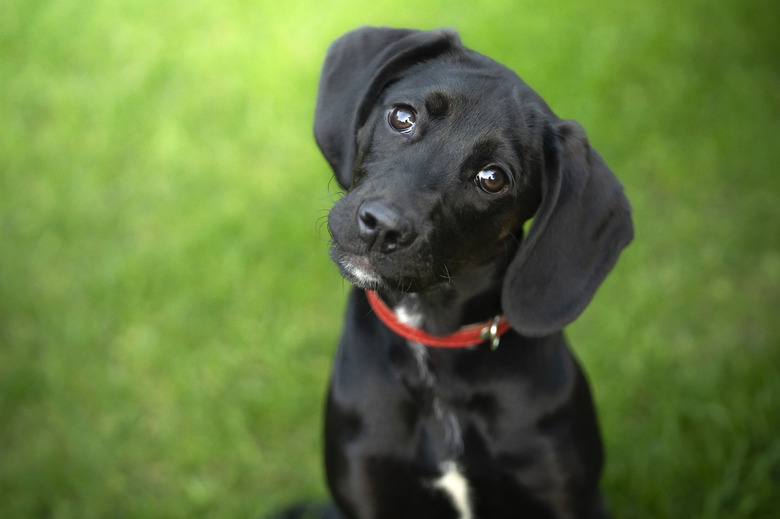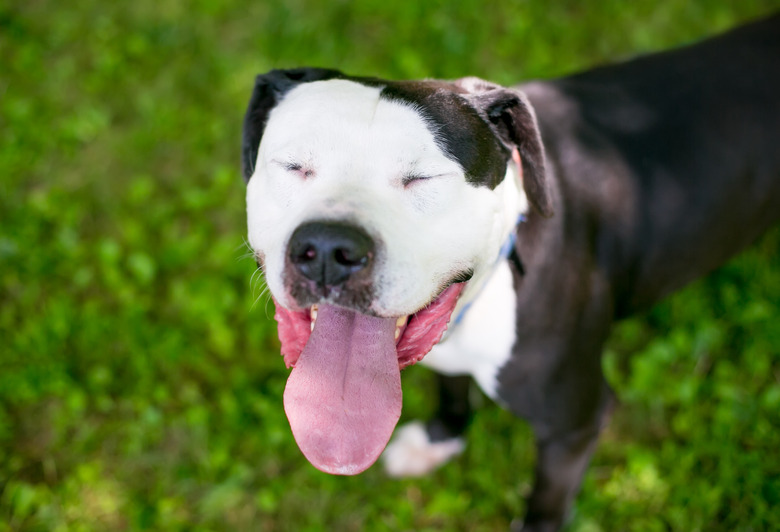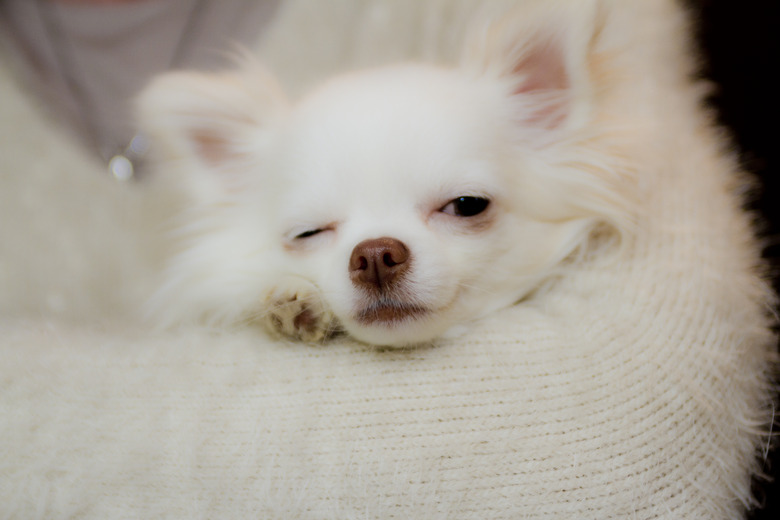Why Does My Dog Wink At Me?
With their big eyes and expressive ears, dogs are capable of making around 100 unique facial expressions. Some dog owners may have noticed an occasional wink from their pup and wondered if this is a way of communicating. Is your dog trying to tell you something when they wink at you?
How dogs communicate using body language
How dogs communicate using body language
Dogs use every part of their bodies to communicate — from nose to tail. Though it's not all playful bows and tucked tails. Many forms of dog body language are more subtle.
A dog's eyes are an important part of how they communicate with other animals. In fact, the classic puppy dog eye expression is a result of thousands of years of domestication by humans and is not seen in other canids (members of the dog family, Canidae). It's no wonder that it's so hard for them to resist!
Dogs also communicate fear and anxiety with their eyes. A nervous dog may expose the whites of their eyes in an expression known as a whale eye. This is a dog's way of communicating that they are feeling uncomfortable or fearful. This may also be accompanied by other nervous behaviors like yawning or lip smacking.
Do dogs blink to communicate?
Do dogs blink to communicate?
Just like humans, dogs need to blink regularly to keep their eyes lubricated. However, dogs also communicate using eye contact, including blinking. A dog will blink to communicate different things in different situations. It's important to observe the dog's entire body language and the context in which blinking is occurring in order to correctly interpret this behavior.
Blinking is often used by dogs as a calming or appeasement signal to humans or other dogs. You may have noticed your dog fixing a hard stare when meeting a new dog at the park. A hard stare can indicate alertness and interest, but it can also be a warning to create space. A dog may fix a hard, unblinking stare at another dog to see how they react. If the second dog returns the hard stare, tensions may escalate. Yet, if they want to show that they are non-threatening they may blink, break eye contact, and turn their head to the side. The second dog may also display other appeasement body language such as lowering their head, tucking their tail, and licking their lips to show that they mean no harm.
In other settings, a dog blink can serve as a way to calm another dog or human. Picture a person sitting on the floor with their dog. The dog is wagging their tail and displaying relaxed body language. The person stands up to take a picture of the dog, and the dog moves their head to the side and blinks rapidly a few times. The dog is still displaying relaxed body language and wagging their tail. But because their human is standing over them, they may feel the need to blink as a calming signal.
Why do dogs wink?
Why do dogs wink?
There isn't much research on this specific adorable facial expression in dogs. Though some animal behaviorists think that a wink could serve as a calming or appeasement signal — just as a blink does.
In the canine world, direct eye contact is seen as impolite or confrontational. Your dog may be comfortable making eye contact with you when asking for attention or dinner, but it isn't typically prolonged. If you notice your dog winking after making eye contact with them, it could be a way for them to break the direct stare. A dog may also use a wink to indicate submission, particularly when being reprimanded by a human or when meeting a new dog.
An occasional wink may also be explained by a piece of debris or irritation in your dog's eye. Some dog breeds, like the Chihuahua, are known to be more blinky (and wink) than others. Factors such as genetics or simply proximity to debris on the ground could cause a dog to wink for purely physical reasons.
If you notice excessive winking, (especially if other symptoms are present) this may indicate an injury or infection. If your dog is winking or squinting with one eye, check to see if there may be a scratch or signs of irritation — like redness, swelling, or discharge. If you see any of these signs, it's best to get them to evaluated by a veterinarian.
In summary
In summary
Dogs may use winking as a form of body language. Just like blinking, winking can serve as a calming or appeasement signal to humans or other dogs. Excessive winking can indicate an injury or infection, especially if you notice other symptoms. An occasional wink is nothing to worry about — your dog may simply have an eyelash stuck in their eye.



